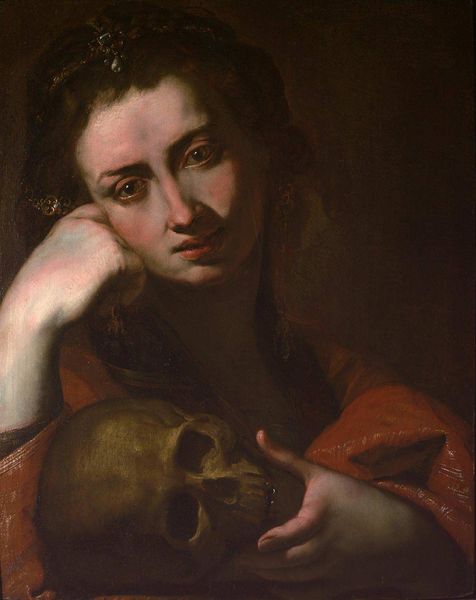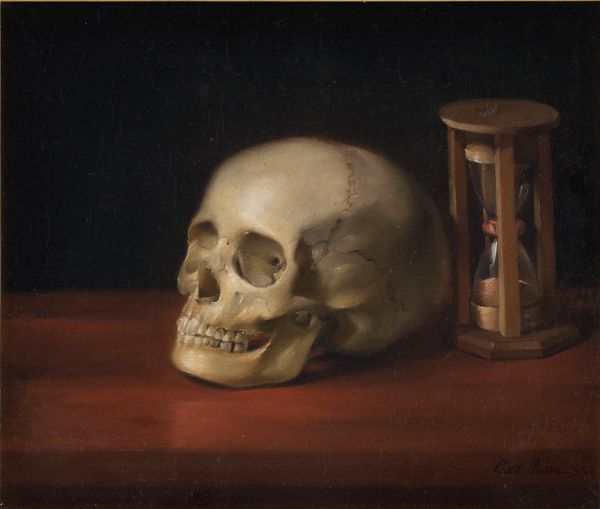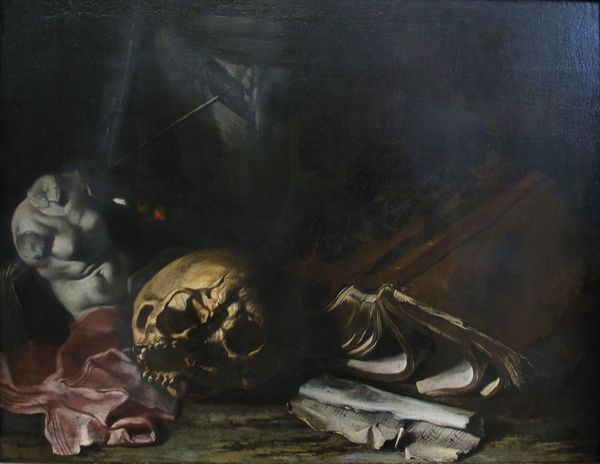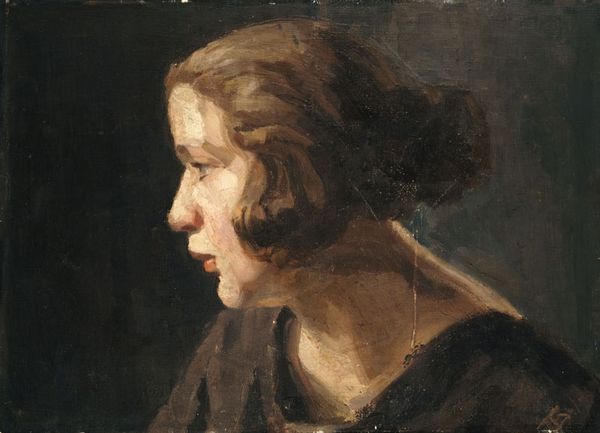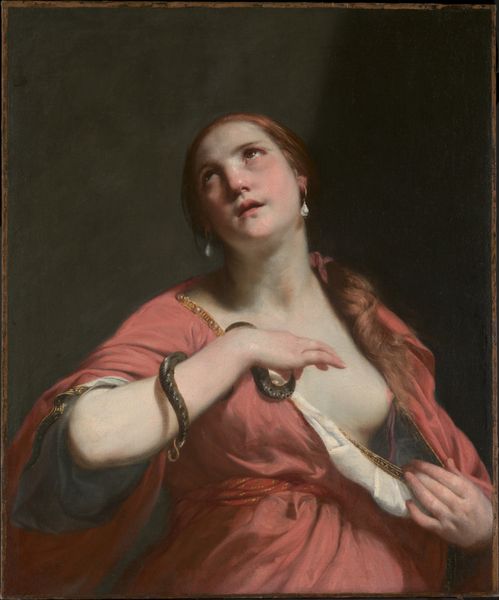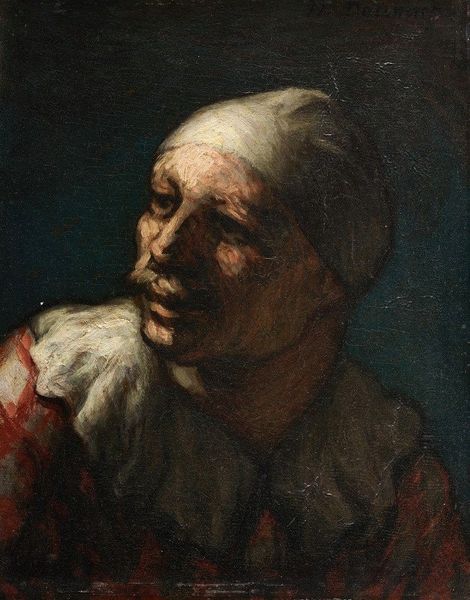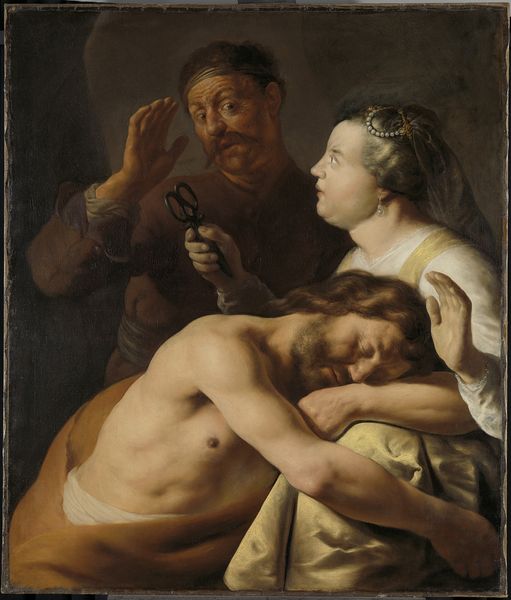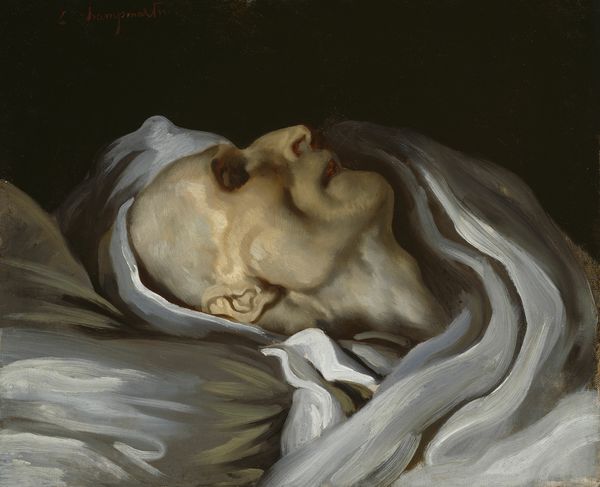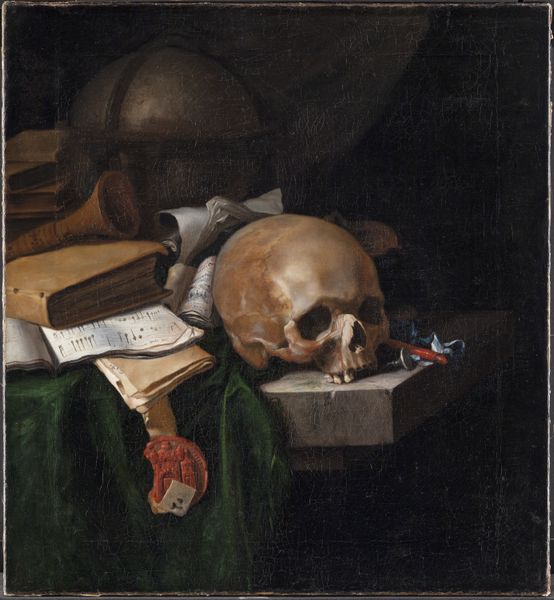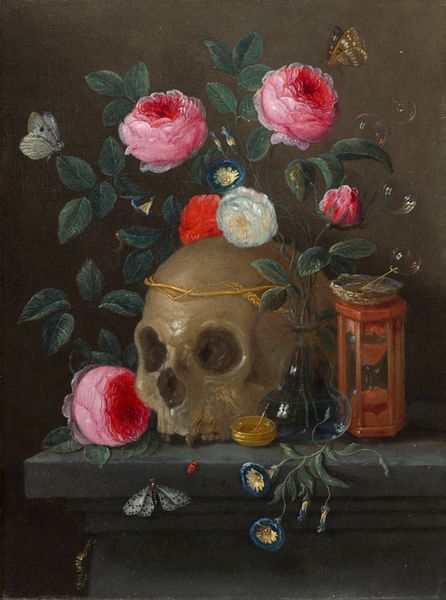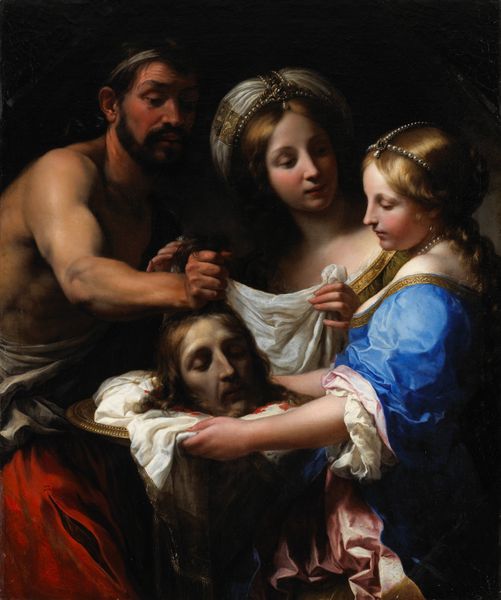
oil-paint
#
portrait
#
oil-paint
#
oil painting
#
momento-mori
#
portrait head and shoulder
#
facial portrait
#
portrait art
#
fine art portrait
Dimensions: 62.9 cm (height) x 44.7 cm (width) (Netto)
Curator: Here we have "A Young Woman Contemplating a Skull," rendered in oil paint. This work, which comes to us from the late 16th century, attributed to Alessandro Casolani, can be found at the SMK, the National Gallery of Denmark. Curator: What strikes me immediately is the somber mood; it's quite potent. The tight composition, with its limited color palette, concentrates all attention on the woman and the stark materiality of that skull. Curator: Indeed. Its historical context places it firmly within the "memento mori" tradition, a meditation on mortality very common during the Renaissance. Given its time, wouldn't it be compelling to view it through a lens of female experience? How was she positioned within her social milieu? What constraints and expectations did she face in relation to life, death, and the pursuit of knowledge? Curator: That's interesting, but before diving into social interpretations, let's closely examine how Casolani used chiaroscuro. See how light falls gently on the woman’s face, drawing our gaze to her expression, then shifts dramatically to highlight the skull’s texture and form? Semiotically, the sharp contrasts build the narrative tension. Curator: I appreciate that, and I certainly see the effectiveness of his technique. But I’d argue it's equally crucial to consider that, as a female figure in the 16th century, her reflections on death were inseparable from gendered power dynamics. Who gets to contemplate death, and under what circumstances? Was her position offering solace in a restrictive social structure, perhaps through religious introspection, or was she given access to wider learning as part of a wealthy household? Her ability to even possess and ponder over such an object speaks to a level of privilege we need to recognize. Curator: Perhaps. Though one cannot overlook how meticulously rendered her hands are—almost as though the very act of holding, of touching, is itself an interrogation of physical existence and its transience. Look how delicate, almost porcelain-like they appear in contrast to the rough and aged texture of the bone! Curator: And it might also symbolize, more broadly, a moment of reckoning. Perhaps she is weighing her worth and societal role against an understanding of ultimate equality in death. The pearls interwoven with her fingers add yet another dimension. Are they adornment? Reminder? Symbols of something lost? Curator: So, for me, it really distills into an inquiry on art's capacity to represent the inevitable—the fragility of life represented through composition, tone, and materiality. Curator: And for me, it resonates with an acknowledgment of our gendered, racialized, and political selves confronting such a reckoning. The painting asks us to confront not just death but who, historically, has been allowed to speak about it—or anything else.
Comments
kirill almost 2 years ago
⋮
This image was 215 megabytes in the original file it crashed my mac
Join the conversation
Join millions of artists and users on Artera today and experience the ultimate creative platform.
statensmuseumforkunst almost 2 years ago
⋮
Contemplations on death was a popular theme in the visual arts of the counterreformation, and when such images showed a woman meditating on a skull, the subject was usually Mary Magdalen mourning her loose living at the thought of the judgment awaiting her in the afterlife. The woman in the picture It was, however, fashionable to have one’s portrait painted as Mary Magdalen, and it is highly likely that the picture is in fact of Eleonora Montalvi degli Agostini, the wife of the ruler of Siena, a patron of Casolani. This is borne out by a chiaroscuro woodcut by Andrea Andreani (1540-1623) after Casolani, showing a similar scene and dedicated to none other than Eleonora Montalvi. Preliminary sketch, a copy of the print and the painting The Collection of Prints and Drawings owns a copy of this print as well as a wonderful study for the painting. On the back of the study Casonali did a preliminary sketch for the woodcut. In fact the drawing made it possible to attribute this painting to Casolani. It was previously attributed to a Venetian painter, but the drawing comes from an album with prints by Sienese artists, including Casolani.
